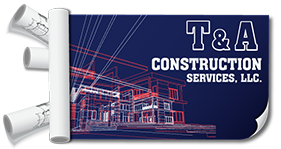BLOG

Wood vs. Metal Framing for Home Additions: Pros, Cons & Use Cases
Explore the possibilities of home expansion through a decision that holds more weight than you might initially think—choosing between wood and metal for your framing choices for additions. The structural integrity of your addition, along with the speed of build and material costs, all pivot on this selection. Every homeowner seeks both aesthetic appeal and durability, so understanding the benefits and drawbacks of these materials is more than a logistical choice; it’s a foundational decision that will echo throughout your home’s lifespan. Consider how each framing option aligns with your goals. Are you looking for a swift construction process? Metal might offer a surprising edge. Or perhaps your location demands resilience against environmental challenges? Wood, with its natural adaptability, could be the answer. As you weigh these considerations, each advantage and limitation becomes a crucial piece of the puzzle, guiding you toward a choice that marries practicality with personal preference. This exploration will illuminate the path forward, ensuring your home addition not only meets but exceeds your expectations.
Durability Comparison: Wood vs. Metal Framing
Wood framing has long been valued for its ability to flex under stress. It can absorb shocks, resist minor earthquakes, and tolerate small foundation shifts without major failure. Properly maintained, wood framing can last decades, even centuries, in dry climates. However, moisture can compromise untreated lumber, leading to rot and pest infestation. Regular sealing and inspections help preserve wood’s resilience. In humid or termite-prone areas, pressure-treated boards and rot-resistant species like cedar or redwood are vital.
In contrast, metal framing, typically made of cold-formed steel, offers strong resistance to rot, mold, and pests. Galvanized coatings protect against corrosion, making it ideal for humid or coastal environments. Steel won’t warp or twist over time, keeping walls straight. Yet, metal can buckle under extreme loads if not properly braced. Designers often include cross-bracing for stability. When installed and maintained correctly, both materials can last for decades. Choosing between them depends on climate, maintenance, and design goals, ensuring your framing choices for additions remain durable and dependable.
Cost Analysis: Wood vs. Metal Framing for Home Additions
Wood framing often presents lower initial costs, especially in timber-rich regions. Softwoods like pine and fir can be locally sourced, reducing expenses. Labor for wood construction is widely available, and carpenters are familiar with standard techniques. This often leads to faster assembly without special training, keeping budgets manageable.
Metal framing costs more per linear foot but can reduce labor time. Pre-cut steel components minimize waste and errors, improving efficiency. For large projects, this precision can offset higher material prices. Since steel doesn’t warp or settle, it may also reduce future repairs. Therefore, analyzing total costs—including labor, maintenance, and waste—helps determine which framing choices for additions best fit your financial plan.
Wood framing is budget-friendly for small projects.
Metal framing offers long-term savings with stability.
Consider both materials for hybrid framing solutions.
Environmental Impact: Choosing Between Wood and Metal
Wood, as a renewable resource, often carries a smaller carbon footprint when responsibly harvested. Trees absorb carbon dioxide, locking it within lumber. Using certified wood ensures sustainability and supports biodiversity. At the end of its cycle, wood can be reused or biodegrade naturally.
Steel production requires more energy but is highly recyclable. Recycled steel reduces emissions compared to new production. Its long lifespan also means fewer replacements. When deciding on framing choices for additions, assess sourcing, transportation, and recyclability. Balancing sustainability with strength helps create environmentally responsible homes.
Choose locally sourced, certified wood.
Opt for recycled steel when possible.
Factor in energy use and transportation distances.
Aesthetics and Design Considerations
Wood framing offers warmth and texture, fitting perfectly in rustic or traditional styles. Exposed beams and custom joinery add natural character. It’s easy to shape, notch, and customize, giving designers freedom for creative details. Additionally, wood provides natural insulation, enhancing comfort.
Metal framing supports sleek, modern designs with clean lines and minimal bulk. Its slim profiles allow for larger windows and open spaces. Precision-cut steel ensures accurate geometry for contemporary architecture. Whether traditional or modern, aligning your style with your chosen framing choices for additions ensures harmony between aesthetics and structure.
Structural Integrity: Wood vs. Metal Framing
Structural integrity defines how safely loads transfer to the foundation. Wood framing uses nailed or bolted connections supported by shear panels to resist lateral forces. Engineered products like LVL beams add strength and stability for open layouts.
Metal framing uses cold-formed steel members with precise dimensions for consistency. Steel’s strength-to-weight ratio allows slimmer profiles to support equal loads. Properly braced systems resist seismic and wind forces. Coordinating with engineers and contractors ensures your framing choices for additions meet all safety standards and perform reliably.
Construction Speed: Which is Faster, Wood or Metal?
Speed of build matters, especially with weather or deadlines. Wood framing benefits from easy availability and skilled labor. On-site adjustments are quick, allowing flexible progress. Metal framing, however, speeds up projects through prefabrication. Pre-cut steel arrives ready for assembly, reducing noise and waste. For larger projects, this can save significant time. Ultimately, your framing choices for additions depend on project size, team experience, and scheduling priorities.
Wood enables fast, flexible modifications on-site.
Metal saves time on large, prefabricated projects.
Local availability influences material speed advantages.
Maintenance Requirements: Wood vs. Metal Framing
Wood framing requires routine inspections to prevent moisture and pest damage. Exterior finishes should be renewed regularly to protect against weather. Any cracks or weak spots need immediate repair. In contrast, metal framing needs minimal upkeep—occasional rust checks and touch-ups suffice. Since steel doesn’t swell or shrink, wall finishes remain stable over time. When evaluating framing choices for additions, factor in long-term maintenance to preserve safety and beauty.
Flexibility and Adaptability of Wood vs. Metal Framing
Wood framing excels in adaptability. Builders can easily make on-site changes with standard tools. It’s ideal for renovation projects requiring quick adjustments. Metal framing, while less flexible, ensures precision in pre-engineered builds. It suits projects with finalized designs and off-site prefabrication. Depending on your needs, both materials provide advantages. Balancing flexibility and planning ensures efficient progress for your home addition.
Best Use Cases for Wood Framing in Home Additions
Wood framing is ideal for small to medium additions like bedrooms, porches, or sunrooms. Its insulation benefits make it energy-efficient. Homes with existing wood structures integrate easily with timber additions. For traditional or custom designs, wood offers charm and ease of modification. When customization and warmth are priorities, timber framing often becomes the preferred choice among framing choices for additions.
FAQs about Framing Materials for Home Additions
Which framing material lasts longer?
Both wood and metal can last decades when maintained properly. Climate and upkeep determine overall longevity.
Is metal framing better for humid environments?
Yes, metal resists mold and pests, making it suitable for humid or coastal regions.
Does wood framing improve insulation?
Absolutely. Wood provides natural thermal insulation, keeping interiors comfortable year-round.
Can wood and metal be combined in one project?
Yes, hybrid systems use both materials to balance aesthetics, cost, and strength.
How do I choose the right framing material?
Consider climate, budget, design goals, and maintenance preferences to make the right decision.
Making the Right Choice for Your Home Addition
Evaluating wood and metal framing requires considering durability, cost, sustainability, and design goals. Each material offers clear advantages—wood adds warmth and adaptability, while metal ensures precision and low maintenance. To make an informed decision, align your needs with your chosen framing choices for additions. For expert guidance, explore home additions Eunice NM, home additions Hobbs NM, or home additions Lovington NM. If you’re ready to start your next project, reach out through our contact page to connect with our construction experts today.

Are you looking for reliable construction solutions? At T & A Construction Services LLC, we've built our reputation on 25 years of solid expertise in Monument, New Mexico. We are licensed, insured, and committed to turning your construction needs into achievements. Whether a minor adjustment or a significant development, we manage every project with sharp attention to detail and a strong commitment to integrity and quality.
